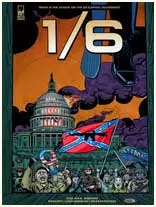What Is the Rule of 3 in Songwriting?

It is a well-known fact that there must be a force behind some songs that become earworms after just a single listen. When you pick hooks and lyrics, the Rule of 3 works in the background.
The Rule of 3, used all along by professional songwriters, is one of the forces at work, one of the strongest principles that show how our brains process information. This can turn an average tune into an extraordinary piece if intelligently applied. An understanding of the rule of 3 can help you in writing anything, from your first ever chorus to your latest single, with sounds familiar yet fresh.
We will look at what the Rule of 3 in songwriting is—and how it works, especially for professional songwriter services like Ghostwriters Planet when writing hit-worthy tracks.
What Is the Rule of 3?
The Rule of 3 is a principle of composition that states that anything that comes in threes is inherently more humorous, satisfying, or effective than any other number of things. This is very much based on psychology; our brain tends to retrieve information presented in three-way. For instance, it is easier to remember slogans such as "stop, drop, and roll" or "life, liberty, and the pursuit of happiness."
In songwriting, the Rule of 3 can refer to:
Three lyrical ideas in a verse or chorus.
Three repetitions of a melodic or rhythmic motif.
Three-part song structure.
A hook delivered three times for impact.
In this sense, it creates some rhythm, anticipation, and resolution, gently guiding a listener through the song’s story without really hitting them over the head. In short, it creates balance, and balance is the secret of an excellent song.
The Mechanism of the Rule of 3 in Songwriting
1. Lyrics: Three Related Lines or Phrases
Basically, three-line lyrics help songwriters create flow and rhythm; here is a common case:
“I called your name,
I searched the sky,
I cried all night.”
Each line supports a common theme, but the use of three variations gives the section emotional depth and progression. Two lines might feel abrupt. Four can sometimes feel like too much. But three? Three feels just right.
2. Hooks and Choruses
In pop music, the hook is repeated three times verbatim or slightly varied to allow for retention.
Imagine a chorus like this:
“You lift me up,
You break me down,
You build me back again.”
This kind of repetition reinforces the emotional message but also keeps the listener engaged. That is why many songwriting services use this to facilitate the retention of the song, especially for commercial or radio-friendly songs.
3. Song Structure
The rule of three holds true even for song structure:
Verse–Chorus–Verse
Intro–Build–Drop
Verse 1–Chorus–Verse 2
These three section progressions help organize ideas clearly while allowing room for both musical and lyrical development.
4. Repetitions
In pop, R&B, and hip-hop, beat patterns often employ a three-hit cadence for dramatic reasons:
Boom-clap-boom
Snap-pause-snap
Or three snare hits before the drop
From the perspective of rhythm, this primes the ear and sets an expectation, so that the groove retains some predictability with satisfaction.
Why Does the Rule of 3 Work?
It works because the Rule of 3 matches the way we naturally process information. Studies show that most things said in threes will be remembered by people and their emotional response to that content will be built.
Here is why:
Cognitive simplicity: Three is the smallest number required to recognize a pattern.
Emotional payoff: Working up some tension, reinforces the message, delivers resolution.
Cultural familiarity: Many stories, jokes, and speeches are made this way. It somehow just feels right.
For songwriters, this means the Rule of 3 delivers an emotional punch, ensures the listener remembers it, and makes it commercially viable—all of which are paramount to writing music that connects.
How Professional Songwriters Use the Rule of 3
At Ghostwriters Planet, our professional songwriters utilize the Rule of 3 to create songs that hit the perfect balance between artistry and structure. Incorporating this principle into everything from lyric development to overall song architecture.
Here is how our song writing services employ it:
Lyrics that build emotionally across three lines or stanzas.
Hooks that repeat three times for maximum impact.
Three-section bridges or breakdowns to add dynamic variation.
Melodic phrasing in threes to guide vocal delivery.
This means that whether the song we are writing is for a new artist, a TV soundtrack, or a brand campaign, the Rule of 3 guarantees the result becomes some cohesive piece that is catchy and memorable.
When(The When)and When Not(To Use the Rule of 3)
While the Rule of 3 is very powerful, it is not a rule; it is a tool. The best songwriters use it and know when to ignore it.
The Rule of 3 should be used:
To make something stick in the mind of a listener: that hook or lyric section.
To build a melody that feels flat into a more contoured, progressive line.
When building chord structures for the chorus, they need all the help they can receive.
Don't ever apply the Rule of 3:
If using it feels forced or that it's being abused in the lyrics.
In songs that call for greater freedom or experimentation in structure (e.g., certain kinds of jazz and other experimental types, folk music).
Note that great songwriters understand how to enliven structure and that good songs will be found where creativity intertwines with structure.
Final Thoughts: Let the Rule of 3 Work for You
When properly applied, this tiny nugget of knowledge converts the amateur work into professional craftsmanship. When the Rule of 3 is properly applied, your song gains flow, memorability, and emotional gravity, all the while keeping the listener interested from beginning to end.
If you need help figuring out how to impart the Rule of 3 into your music or wish to see your ideas worked into professional songwriting, Ghostwriters Planet is here for you. We provide songwriting services tailored to the sound, genre, and artistic goals that best fit your work with our experienced team.
limited Time offer
- 00
- 00
- 2





